- News
- Reviews
- Bikes
- Components
- Bar tape & grips
- Bottom brackets
- Brake & gear cables
- Brake & STI levers
- Brake pads & spares
- Brakes
- Cassettes & freewheels
- Chains
- Chainsets & chainrings
- Derailleurs - front
- Derailleurs - rear
- Forks
- Gear levers & shifters
- Groupsets
- Handlebars & extensions
- Headsets
- Hubs
- Inner tubes
- Pedals
- Quick releases & skewers
- Saddles
- Seatposts
- Stems
- Wheels
- Tyres
- Tubeless valves
- Accessories
- Accessories - misc
- Computer mounts
- Bags
- Bar ends
- Bike bags & cases
- Bottle cages
- Bottles
- Cameras
- Car racks
- Child seats
- Computers
- Glasses
- GPS units
- Helmets
- Lights - front
- Lights - rear
- Lights - sets
- Locks
- Mirrors
- Mudguards
- Racks
- Pumps & CO2 inflators
- Puncture kits
- Reflectives
- Smart watches
- Stands and racks
- Trailers
- Clothing
- Health, fitness and nutrition
- Tools and workshop
- Miscellaneous
- Buyers Guides
- Features
- Forum
- Recommends
- Podcast
feature
 2022 Salsa Journeyer GRX 600 - crank.jpg
2022 Salsa Journeyer GRX 600 - crank.jpgWhat will Shimano’s next groupset be? Here’s our best predictions for 2022
With the road groupsets of Sram and Campagnolo already at 12-speed - and with Shimano having already added an extra sprocket right down to its fourth tier MTB groupset, Deore - back in the summer of 2021 it was almost painfully obvious what was coming next from Shimano.
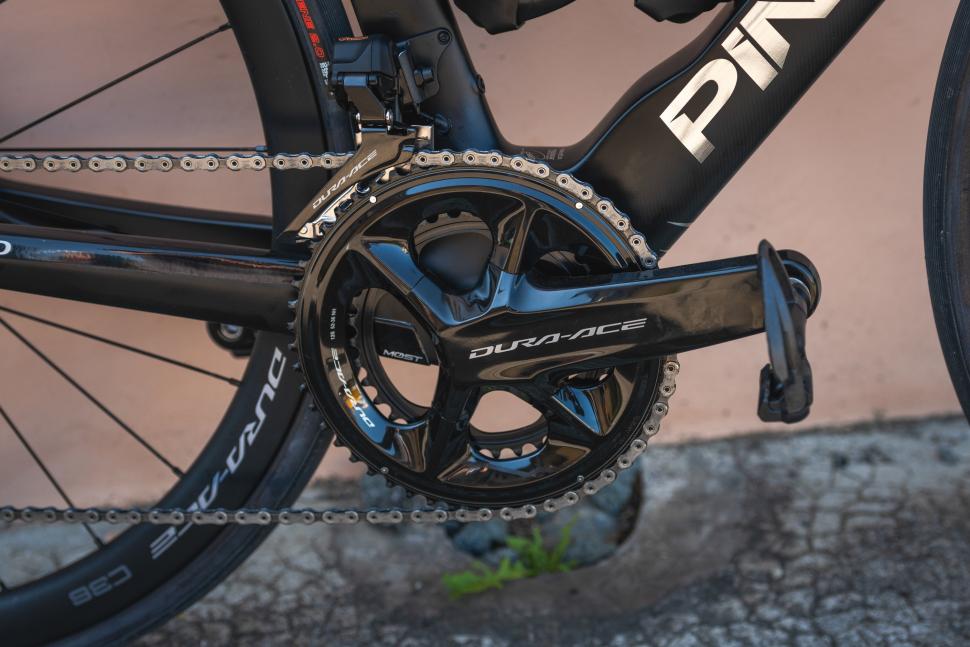 Sure enough, the much anticipated top-end Dura-Ace and second-tier Ultegra groupsets officially landed in August of last year – and both were 12-speed and electronic only. Now that's out the way, the question is... what could possibly be coming to Shimano’s drop-bar range next?
Sure enough, the much anticipated top-end Dura-Ace and second-tier Ultegra groupsets officially landed in August of last year – and both were 12-speed and electronic only. Now that's out the way, the question is... what could possibly be coming to Shimano’s drop-bar range next?
That’s maybe a little harder to work out. Here are our best predictions, starting with the most likely...
12-speed GRX
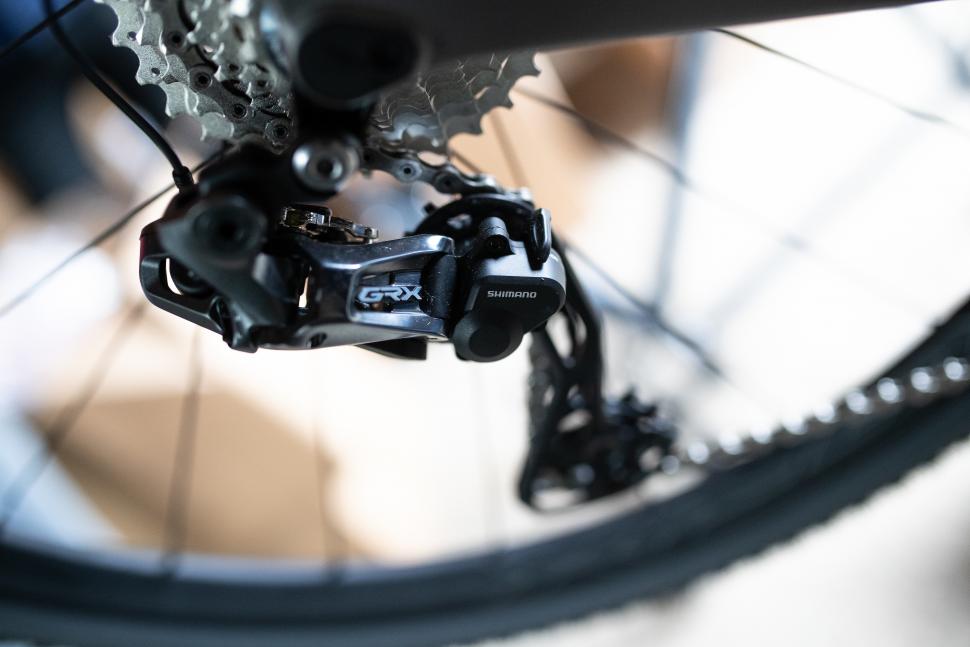 With Campagnolo already up to 13-speed for gravel with its Ekar groupset, Shimano is very much behind with 10-speed and 11-speed GRX, and could really do with at least a 12th sprocket to enter the same ballpark as the superb gearing range offered by Campagnolo for the rough, off-the-beaten-track stuff.
With Campagnolo already up to 13-speed for gravel with its Ekar groupset, Shimano is very much behind with 10-speed and 11-speed GRX, and could really do with at least a 12th sprocket to enter the same ballpark as the superb gearing range offered by Campagnolo for the rough, off-the-beaten-track stuff.
> Your complete guide to Shimano’s GRX gravel groupset
But here we’re only predicting a partial move to 12-speed for Shimano GRX. You see, in the current series, GRX Di2 has always been a bit of a black sheep, a little bit of an outlier from the rest of the range.
> Review: Campagnolo Ekar 13-speed gravel groupset
The Servo Wave braking technology – where initial pad travel is fast, so little lever movement is needed to bring the pads into contact with the rotor – that has only just now worked its way into the very latest Ultegra and Dura-Ace groupsets was already there in the Di2 version of GRX from its first launch, but the rest of the GRX range wasn’t graced with the greater control and braking power the technology offers.
So with this prediction for 12-speed GRX, we’re not anticipating that additional sprocket coming to anything other than the very top tier – 12-speed for drop bars could well be something Shimano is going to keep reserved just for its electronic groupsets.
It’s going to mark a very strong distinction between the haves and the have nots with 12 sprockets opening up a bigger range of gearing options.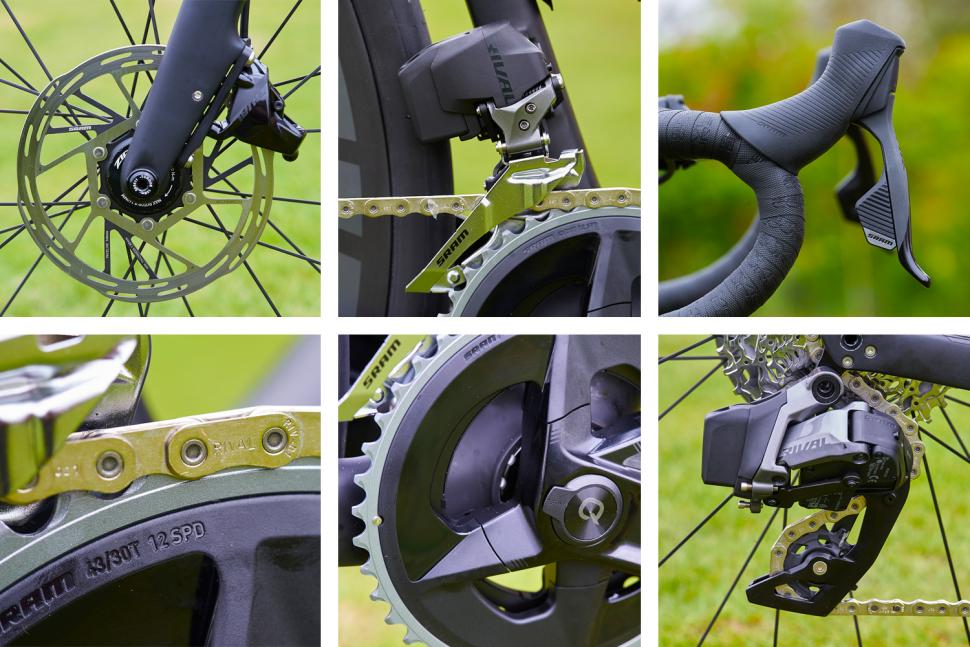
Although we fully expect Shimano domination in the nascent UCI Gravel World Championships this year, when it comes to the groupsets that we see on the roads and trails, market share may well be taking a hit. Shimano’s 12-speed prices have remained high while Sram's electronic eTap AXS technology has already trickled down to its third tier with the Rival version introduced last year.
> Review: Sram Rival eTap AXS groupset
So what kind of gearing are we expecting? Well, we would very much like to see a 46/32T or a 44/30T crankset. The current jump from 46 to 30 is massive, and requires some big compensation shifts every time. It would be much nicer if they were a little closer.
To put things in perspective, the gearing difference for a semi compact 52/36T crankset is about 44%. In other words, if you stay in the same rear sprocket and move the chain from small chainring to the big chainring, the gear you're pushing gets 44% larger.
Going from 30 to 46 is 53%, a big difference. Using to a 44T big ring and a 30T inner would put the number at 47%; still big, but much more manageable. But anyway, changes to the chainrings isn’t something we’re really expecting as Shimano didn’t do anything so radical on the road – the larger 54-40T chainset option on Dura-Ace was the only new addition there.
Could we see a 12-speed cassette that goes from 11-36T? One that’s essentially identical to the current 11-speed 11-32T cassette, with its three single-tooth jumps, just with an extra 36T sprocket tacked on the end?
The breakdown of this we hope would be: 11-12-13-14-16-18-20-22-25-28-32-36T.
We think this would be a very welcome addition. Particularly as the current 11-34T 11-speed cassette doesn’t have any single-tooth jumps at all; although in fairness, the jumps between the middle of the block are quite tight.
That combination of extra single-tooth jumps and slightly wider range would be great for gravel and long-distance riding. Although 30x36 might sound mightily small, you try cycling up a 20% off-road grade with so many extra kilos after three days of riding... you’d be thankful for it then!
We expect the freehub to take the design cues of new Dura-Ace and Ultegra, rather than the Micro Spline design on the MTB groupsets. This means that the smallest sprocket will be limited to 11T, so there’s not even the chance of borrowing the progression of those MTB cassettes, as they start at just 10T.
An 11-50T cassette, following the same progression as the 11-42T cassette but with an extra sprocket tacked on the end, would be an obvious way to increase the range (a new rear derailleur with a larger capacity would be required). That 8T jump has been a feature of Sram’s Eagle MTB cassettes for years, so wouldn’t be a radical departure from what we’ve seen before.
Still, it would be quite nice to smooth out the progression and add a single-tooth jump. Maybe just slotting in a 12T sprocket after the 11T and splitting the difference with an 11-46T overall range would be the way Shimano does it.
Other things we would expect are some trickling down of the tech that Shimano introduced in the recent Dura-Ace and Ultegra release: wider clearances between the brake pads and rotors for a quieter system, a separate bleed port and valve screw for easier brake maintenance, using (what were previously) MTB disc rotors, faster shifting and using a coin cell battery in the shifters rather than having to cable them up. Essentially, we expect it to be exactly the same as the new Ultegra, but just with different gear ratios that are better suited to the tougher, rougher terrain and heavier bikepacking loads. 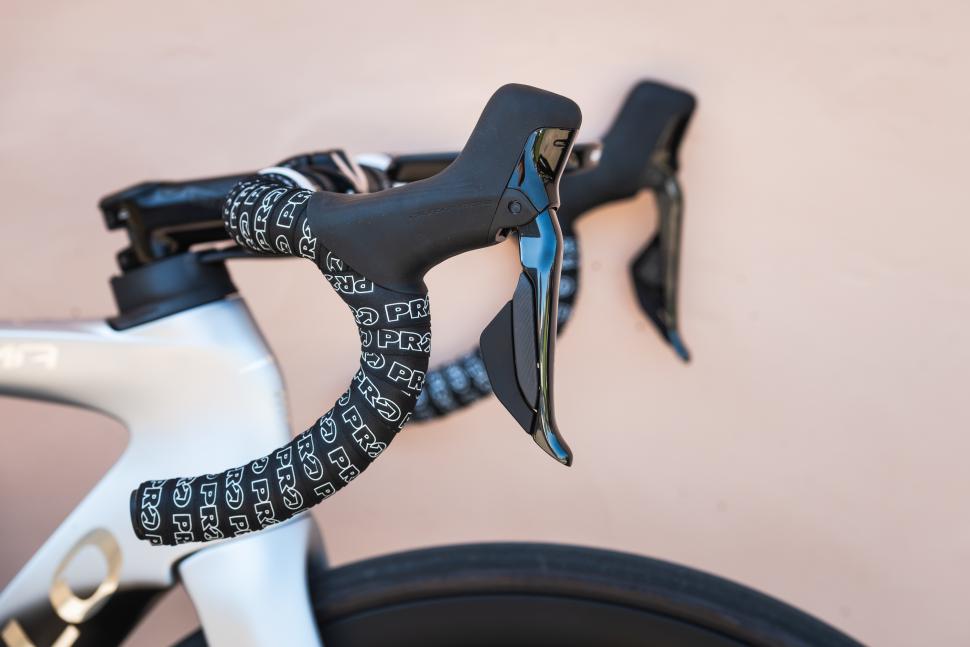
> Review: Shimano Dura-Ace R9200 Groupset
There isn’t currently a Dura-Ace spec of GRX, but with the inaugural calendar of UCI gravel races coming up this season, there’s a chance Shimano will decide light savings are all the range in the gravel-sphere too, and bring out a Dura-Ace tier GRX.
105 going Di2 and 12-speed
Perhaps the most obvious update for 105 would be for it to go electronic, and with that make the jump up to 12-speed - essentially bringing over the updates Shimano just made to the Dura-Ace and Ultegra groupsets, but a little bit heavier just as the mechanical 105 groupset has been for so long compared to the higher tiers. 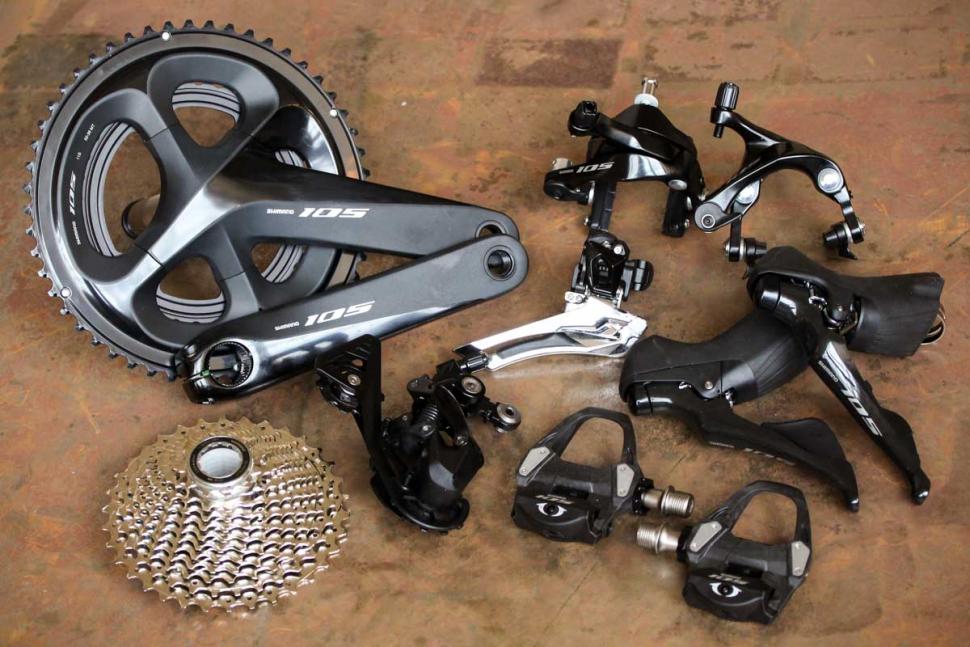
The criticism of Sram’s current third-tier electronic groupset is that it’s the heaviest one out there; but it’s also the cheapest by a considerable margin. Will Shimano go lighter and more expensive than Rival AXS, or opt instead for heavier and cheaper?
Nevertheless, we’d expect Shimano to price it similarly to Sram’s Rival eTap AXS groupset which costs £1,470, and would set it as more expensive than mechanical R8000 Ultegra, which is currently at £954.92. With this, 105 wouldn’t really be the every-person, 'privateer' groupset that that is currently, but it would make Shimano’s Di2 a lot more accessible.
> Review: Shimano Ultegra R8000 groupset
The mechanical version of Shimano 105 11-speed is such great value and it really fills the price point very well, so we don’t expect that to go. Similarly, although Shimano launched 12-speed Ultegra as Di2-only, bikes are still being specced with the previous mechanical version of the second-tier groupset in order to fill the price gap void.
105 going 12-speed but staying mechanical
An alternative prediction would be that 105 does go 12-speed, but only with mechanical shifting.
Shimano doesn’t have a problem with combining 12-speed and mechanical actuation; it has done that on the MTB side, and those components certainly get ploughed through some horrid conditions.
Although it’s more gears in the same space, there were the same worries when 10-speed gave way to 11. We haven’t got any qualms about speccing 11-speed 105 on a winter bike today, so perhaps we shouldn’t worry about 12-speed tomorrow.
It would be very interesting to see how close this takes mechanical 105 to the weight of Dura-Ace Di2 - it might not be very flattering for the top-tier fans.
We expect everything would remain the same in terms of the gearing offered, along with the inclusion of Servo Wave braking technology.
Still, having to replace gear cables on bikes that are increasingly integrated nowadays would be a bit of a pain. If 105 doesn’t become Di2, maybe we would see more people choosing Rival AXS if there isn’t a third-tier Shimano electronic option; but the price points would likely be very different indeed, so there’d still be an important place for mechanical 12-speed.
As Shimano didn’t bring out an updated version of mechanical Ultegra, it wouldn’t surprise us if riders choose 12-speed mechanical 105 over the latest Di2-only Ultegra if they don’t like having to remember to charge the groupset. If it weighs the same or even ends up being lighter, this could further make the case for going 105 over Ultegra for some of us.
Yet another alternative prediction would be that instead of 105 going 12-speed and staying mechanical, Shimano could belatedly release a mechanical version of 12-speed Ultegra.
Shimano would be plugging the same gap but with Ultegra rather than 105. That said, if that is their solution it would be rather curious that they didn’t release the mechanical version with the recent Ultegra update.
Power meters for 105
105 as it stands does not currently come with a power meter. With the rise in popularity of the online virtual roads of Zwift and other training platforms including SYSTM and TrainerRoad, using power is certainly no longer just confined to racers; it gives you accurate data for riding on these platforms.
> Review: Shimano Dura-Ace FC-R9200-P power meter
A power meter measures exactly the effort you’re putting out regardless of the terrain, the conditions, your fitness, or any other factor. It’ll also give you figures that you can meaningfully compare over time to gauge progress, which is great for anyone looking to boost their fitness.
Power meter prices have tumbled over the past two or three years, making them accessible to more people than ever before, and are certainly on the tick list these days for someone looking for a third-tier groupset.
> 12 reasons why you should buy, and use, a power meter
Shimano included a power meter option for the first time with the Ultegra Di2 release and Sram delivers on this for even cheaper with the option of the D1 Quarq Dub Power Meter on its Rival eTap AXS groupset.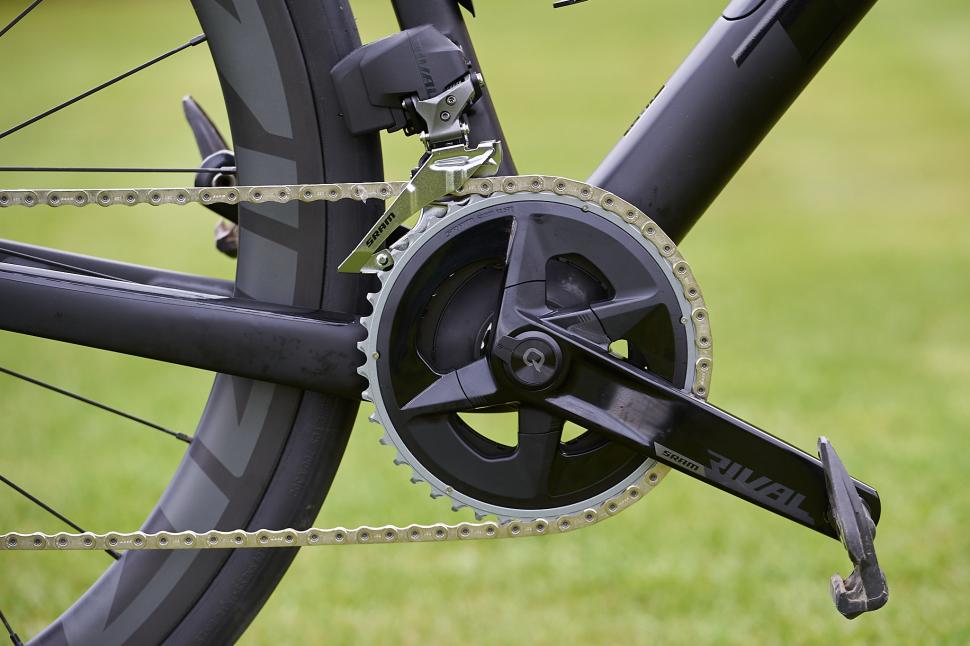
> Review: Sram Rival AXS Power Meter
For riders who have a bike equipped with Shimano 105, retrofitting a 4iiii power meter is often the most economical solution riders opt for, given the dual-sided version is priced at £579 and the single at £299. It’ll be interesting to see if Shimano uses the next update to bring power down to 105 to meet the needs of riders at this level.
But... that’s not to say that power meters are cheap, and so sacrifices have to be made at this price point.
The spec on Sram’s third-tier groupset measures left (non-driveside) power only, and doubles this to give your total watts. Many riders will rarely have an output that’s actually 50:50, so a single-sided system is unlikely to provide you with such accurate numbers.
That said, we’d expect Shimano will also have to stick to a one-sided option for 105 in order to keep the groupset in the same price bracket.
What would you like to see included in the new Shimano GRX or new Shimano 105 groupsets?
Anna has been hooked on bikes ever since her youthful beginnings at Hillingdon Cycle Circuit. As an avid road and track racer, she reached the heady heights of a ProCyclingStats profile before leaving for university. Having now completed an MA in Multimedia Journalism, she’s hoping to add some (more successful) results. Although her greatest wish is for the broader acceptance of wearing funky cycling socks over the top of leg warmers.
Latest Comments
- Sriracha 3 sec ago
The bus driver was exceeding the speed limit. A boy died. They say "speed kills" - except when it's a cyclist death, when it "made no difference",...
- KDee 46 min 42 sec ago
I'm still running an ELMNT BOLT V1, and I've never really understood the LED's. I'm sure I configured them for HR zones, but never really look at...
- don simon fbpe 48 min 48 sec ago
This is a late April Fool's, isn't it?
- chrisonabike 48 min 57 sec ago
Mostly agree. Although ... high level sport is complicated. It's not wrestling exactly, but there sometimes seems to be more than a little...
- Hirsute 1 hour 49 min ago
It would have been better to buy 1 lock for £200 or rather 250 for a hiplock or litelok.
- David9694 1 hour 54 min ago
It just seems a lot of trouble to go, doesn't it. If you are into building stuff like this perhaps some system where the vehicle brings you to...
- don simon fbpe 2 hours 11 min ago
Why is this not the will of god?
- hawkinspeter 5 hours 15 min ago
PKD foresaw it, though his novel was based on a different outcome of WWII, not the precursor to WWIII. Maybe the Idiocracy film is a closer fit?
- OnYerBike 7 hours 17 min ago
@Sredlums: I'm not sure I follow your logic. If someone grabs your helmet twists it, then the reason it doesn't feel good is because the outer is...
- Rapha Nadal 7 hours 17 min ago
Coming to the mid-paced Saturday club ride soon.
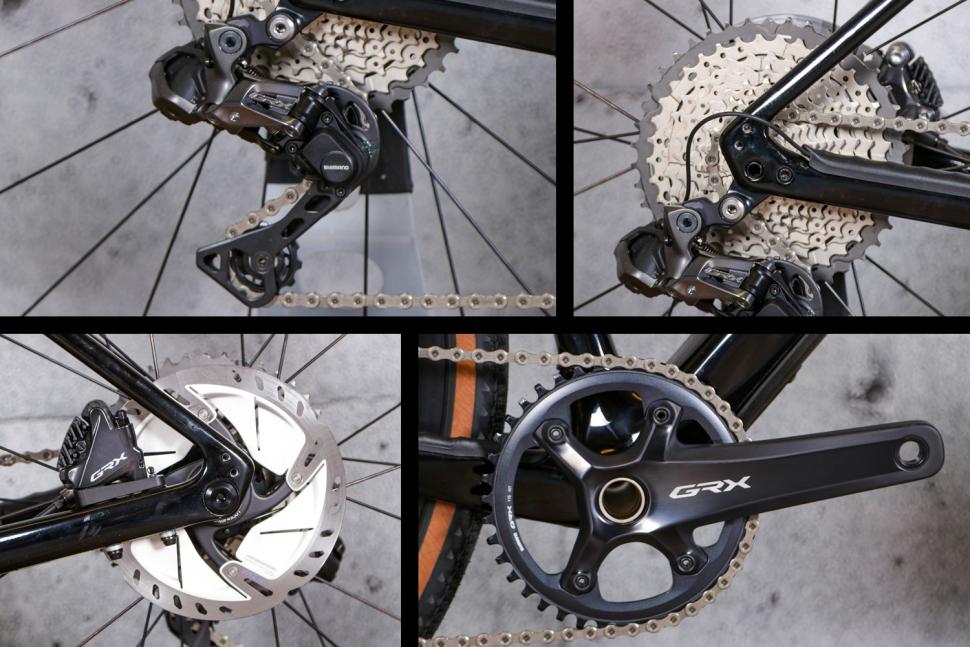
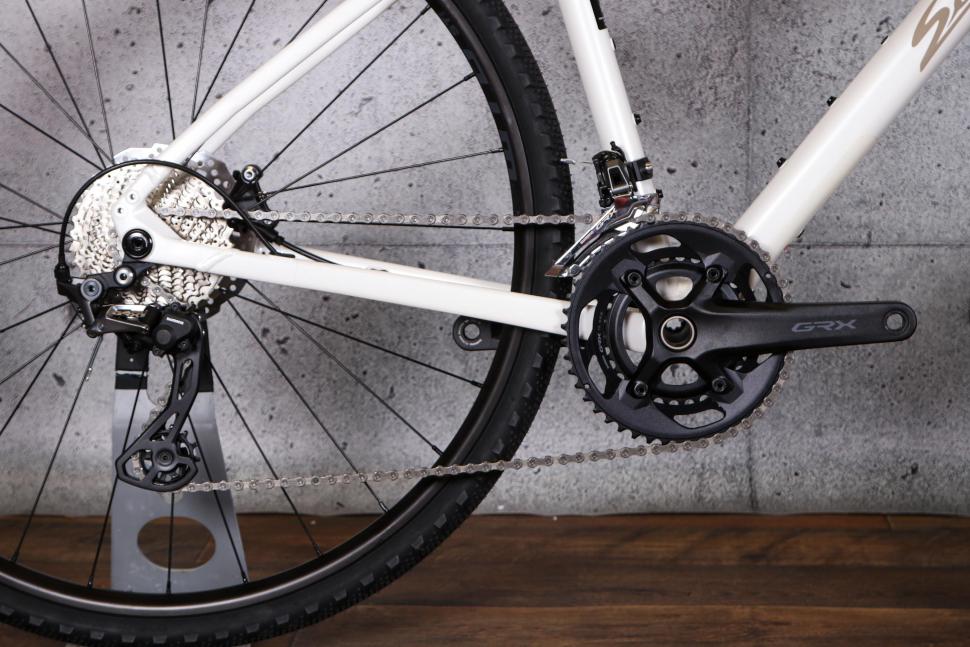
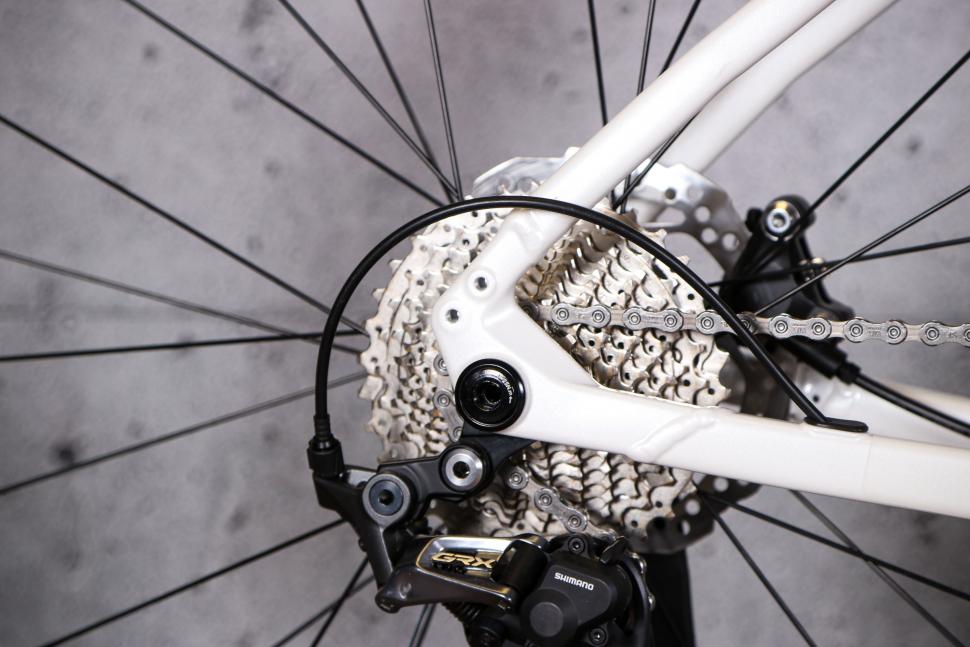

Add new comment
23 comments
Hoping Shimano and SRAM are reading...
It is very enraging that Shimano has had 12-speed technology for years and they still do not understand the gravel and bikepacking world needs wide-range mountain bike capability, it is mind boggling that GRX did not come with 12-speed from the start and we are still waiting, but even if they had it, they only offer it with flat-mount bakes, which don't work if you use a mountain bike front suspension.
On my gravel rig, I have a 12-speed XT RD and 10-51 cassette, shifted with a Gevenalle shifter on TRP Hylex RS post-mount hydraulic brakes and a 30t front ring. It works fantastic, but TRP has discontinued the Hylex post-mount brake which makes it a huge issue for post-mount frames and mountain bike front suspensions. The same goes with Pinion frames that use the Cinq drop bar shifter for Pinion gear boxes, which is based on TRP brakes, with now only the flat-mount option.
SRAM does not get it either, their AXS shifters are compatible with MTB derailleurs but with a lifespan of only 20 hours per battery and a price tag that makes you take a second mortgage, that is not a viable option for bikepacking and riders who do not have deep pockets, or simply do not want the hassle of having to charge their derailleur, that's me on all 3 counts.
At this time, the only viable hack for bikes that require post-mount hydraulic brakes and wide-range ratio, is SRAM 11-speed shifters with a Ratio-Tech 12-speed rachet upgrade, Force 1 for example still has post-mount hydraulic brakes and it is compatible with cable-actuated mountain bike RD's GX, XO and XX. If some "hackers" can make it work, it beggs asking why SRAM and Shimano are still behind the market demand.
The third option is 105 gets electronic shifting but still has 11 speed.
How about an analogue (you heard it here first (possibly)) 12 speed 105 at the weight of 11 speed Ultegra. It gives the digital deniers something lighter to build a mechanical steed with. Current 105 could be rebadged Tiagra or perhaps a new level name, as the workhorse groupset. This would in fact promote the lower groupsets if Dura-ace and Ultegra remain Di2.
I ride Campagnolo on my road bikes....but on the Gravel self build mullet... 2x10 Sram running 46/33 and 11/42.... it'll go anywhere... huge range and few overlap... only use the 33 ring off road and bikepacking.... proves you don't need all these cogs unless you are racing.... Ride Safe
What you should expect from Shimano is nothing. The new 12-speed groupsets are pretty much non-existent because their manufacturing is still totally and utterly shot. You can get them on complete bikes (if you can get a complete bike that is) but even then they can’t keep up with supply. I’d wager one of my bikes that they’ll maybe ‘announce’ something new deep into this year, but you won’t see it until 2023.
SRAM seem to be on the ball, and Campagnolo saw a 37% increase in turnover in their June 2020 / May 2021 fiscal year (source Davide Campagnolo: “Current market situation offers positive outlook for the industry” - Bike Europe (bike-eu.com)) – so expect more from them in 2022. But Shimano? Nah.
I'm not so keen on 12 speed having seen the longevity of chains drop noticably with the move to 11 speed. Having spent the winter riding 2x11 GRX, I made the mistake of not checking the KMC 11 speed fitted by Giant as I'd only done about 1400 miles, and it was well beyond 1.0 thingies, but fortunately I have been living in the bigg(ish) ring so haven't trashed the cassette. My summer bike rarely gives 2000 miles out of an Ultegra chain - my old 10 speed 105 could be persuaded to give 3000 at a pinch without any exotic cleaning regime - 3 chains to a cassette.
My main wish for Shimano is to catch up with stock on their current product lines - road disc pads, rotors, chains and cassettes are all often out of stock on Teh InterWeb, and though I'm not averse to supporting my local bike shop, they've been struggling too.
For mechanical, I wish they would rotate the gear mechanism in the lever by 90 degrees so that the gear cable didn't wear out in 6 months.
Riding in dirt and rain ? 2000 miles in summer on ultegra on a regular roads or simple gravel in mostly dry ?
that's purely due to bad maintenance regime and using crap lubes. I ride the whole year, 5 days a week in all conditions and I'm currently have still 3 chains same cassette and same front.
close to 10000miles and everything still going strong.
Fed up two years ago of wrecking a chain sprockets and cassette in one winter due to those stupid oil base lubes. Ran quite till they where dead from the formed grinding paste 😁
Switched to hot waxing with msw and never looked back. Have binned all my oils and lubes immediately for drivetrains a year ago...
It seems to me that - prior to the introduction of 12 speed - the difference between 105 and ultegra (other than 105 cranks not falling apart!) was pretty marginal except for the really weight obsessed, and made the additional cost of ultegra pretty difficult to justify. So I would have thought making 105 12 speed and electronic was a bit pointless as that would recreate the same problem.
Indeed sir. For me 105 currently occupies the sweetspot of all the 11-speed groupsets, be they Shimano, Campag' or SRAM. It costs as much as it should, performs beautifully in every respect and seems to be very robust. The rather complicated cable routing on the front mech' and the unecessary two-tone cranks are flaws I can easily live with.
Can you downgrade from ultegra 6800 crankset to a 105 ?
Yes, I have a 105 crank on the non-drive side of my Ultegra crankset because I bought it secondhand with a 4iii powermeter, identical fitting.
But what about the drive side though? Was thinking of the front changer and spacing.
As far as I can see from Shimano's slightly confusing compatability charts you'd be fine mixing Ultegra 6800 or R8000 with 105 5800 or R7000: https://productinfo.shimano.com/#/com?cid=C-453&acid=C-454
Thanks although I now need a chart to understand the chart
I know, you would have thought a company Shimano's size could lay out a couple of bob on a decent search facility, enter the parts you have or want to get and a list of compatible others comes up. If there are any enterprising web designers out there I reckon shimanocompatibility.com would get a good bit of traffic...
But making it 12 speed mechanical would hoover up a large chunk of the market, although of course keeping 11 speed 105 would ensure healthy sales
If 105 goes 12 speed then would be great if Tiagra goes 11 speed for those of us with 11 speed groupsets that they have no intention of upgrading.
If you don't want to upgrade and your groupset functions OK then why does it matter? You surely don't have to buy anything.
And in the end this is just a guessing game for bored people with money to burn. Shimano et al will do whatever they think will sell. I'm just glad that they still continue to sell and support the lower-end groupsets for cheapskates like me.
Replacement parts.
I'd like to see them do a crankset that lasts more than a couple of years
They do, it's called a Tiagra chainset
What kind of peasant do you think I am?
It would be nice to see integration between the Gravel groupsets and the MTB groupsets. Imagine being able to pick from any of the clutched MTB groupsets rather than only being able to buy the GRX rear derailleurs if you wanted to use a clutch.